Macroevolution: Speciation and Phylogenesis
Evolution homepage -- BIO 311D homepage
Differentiation among populations
Local populations will inevitably differentiate (i.e. become more different in their allele frequencies) due to the five factors previously discussed.
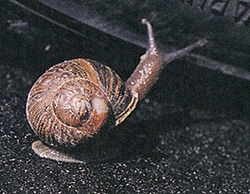
Local differentiation in the land snail,Helix aspersa, was extensively studied.

In Bryan, Texas, snail populations have been differentiated along very short distances, such as on different sides of streets, due to very limited migration and chance events. The pie diagrams show the frequencies of different alleles.
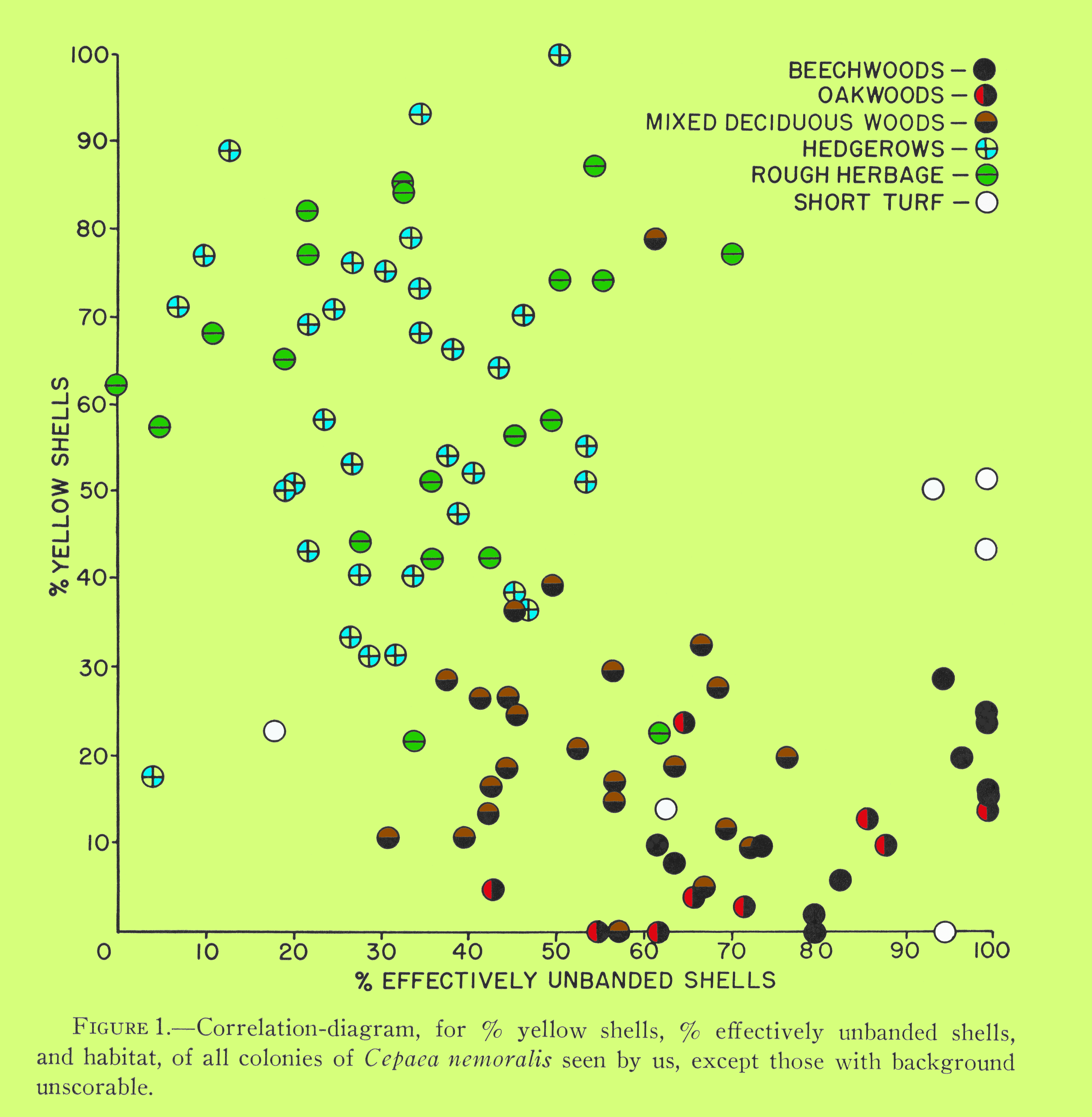
Local phenotypic differentiation in the garden snail (Cepaea hortensis) is caused by differential predation in the various habitat types. Birds, mostly thrushes are preferentially feeding on snails that have conspicuous shell color and/or banding patterns.
bloodgroups
Large-scale variation among populations
Allen's rule
Allen's rule: The size of extremities (limbs, tail, ear, etc.) increases from colder to warmer climates in the same species or in closely related species.
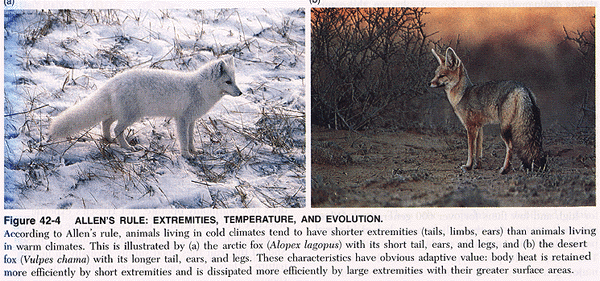
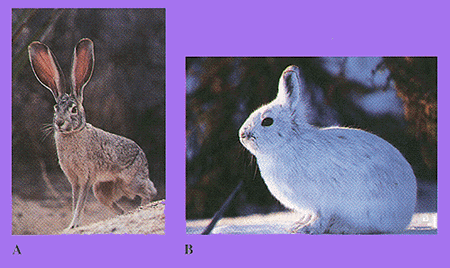
The sizes of extremities of the jackrabbit (left) of the Southwest and the arctic snowshoe hare (right) reflect adaptations to different temperature regimes.
Bergmann's rule
Bergmann's rule: The body size of organisms within species (or in closely related taxa) increases from warmer to colder climates.
Fact: The surface-to-volume ratio decreases for larger objects. Smaller objects lose heat faster, as a consequence.
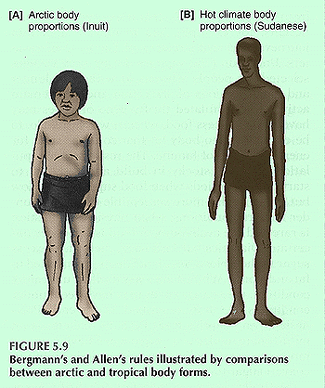






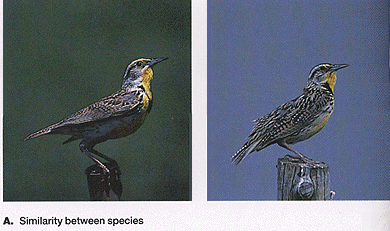
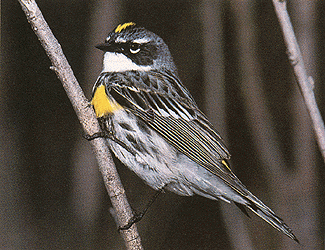

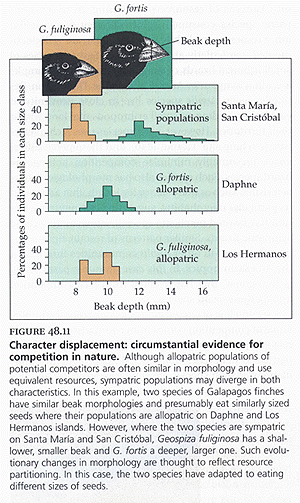
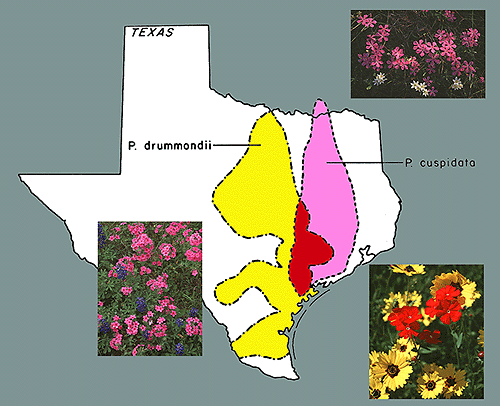 In Drummond's phlox (Phlox drummondii), change in flower color occurs when it is in sympatry with a closely related species, the pointed phlox (Phlox cuspidata). The color of the pointed phloxes' flowers is pink, whereas that of Drummond's phlox is red (area in red). When the ranges of the two species do not overlap, the flowers of Drummond's phlox are almost identical to the color of the flowers of the pointed phlox. Though hybrids do occur in sympatry, they are sterile, and therefore production of hybrid seeds decreases the reproductive success of the parental plants. This color change increases the morphological difference between the two species reducing the occurrence of mistaken interspecific pollen transfer by pollinators.
In Drummond's phlox (Phlox drummondii), change in flower color occurs when it is in sympatry with a closely related species, the pointed phlox (Phlox cuspidata). The color of the pointed phloxes' flowers is pink, whereas that of Drummond's phlox is red (area in red). When the ranges of the two species do not overlap, the flowers of Drummond's phlox are almost identical to the color of the flowers of the pointed phlox. Though hybrids do occur in sympatry, they are sterile, and therefore production of hybrid seeds decreases the reproductive success of the parental plants. This color change increases the morphological difference between the two species reducing the occurrence of mistaken interspecific pollen transfer by pollinators.